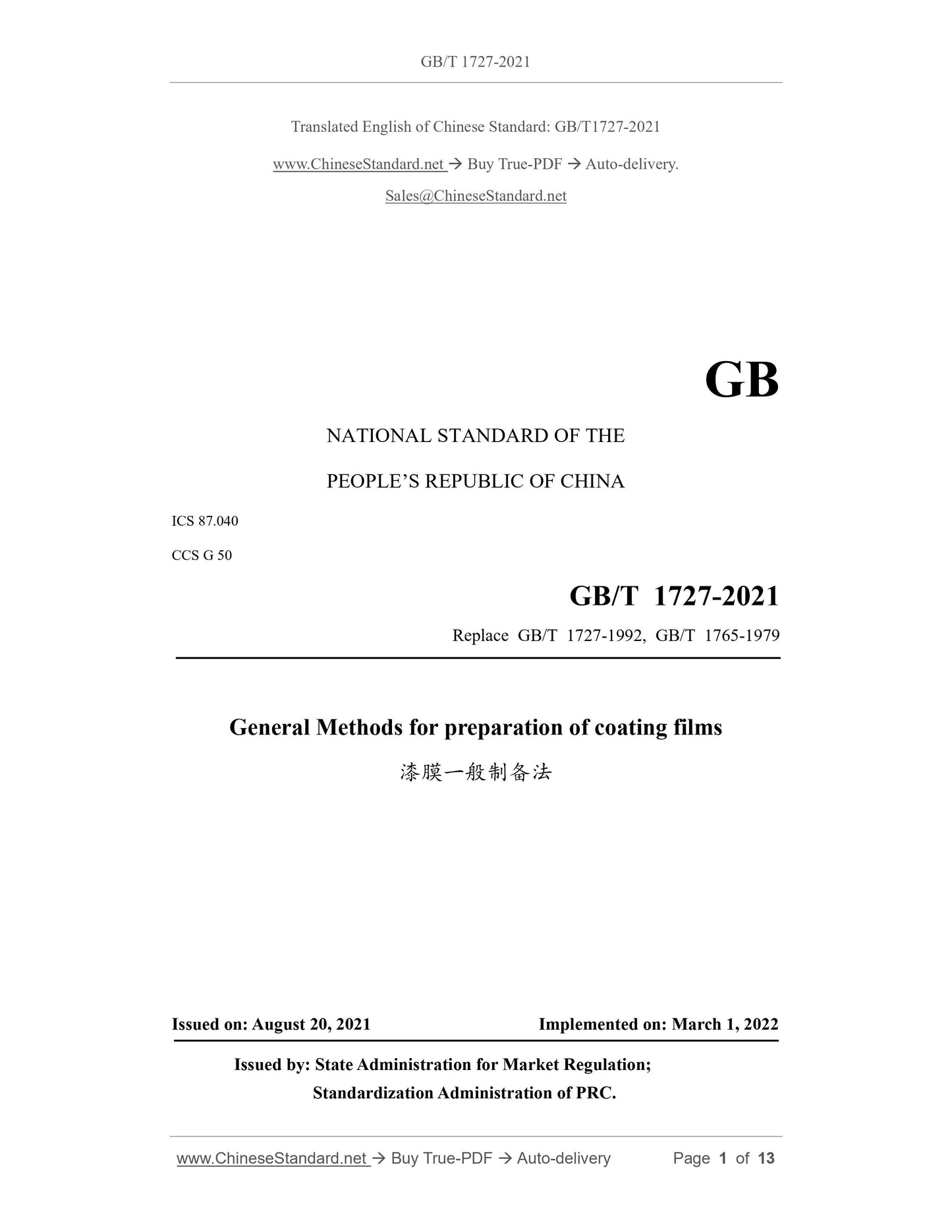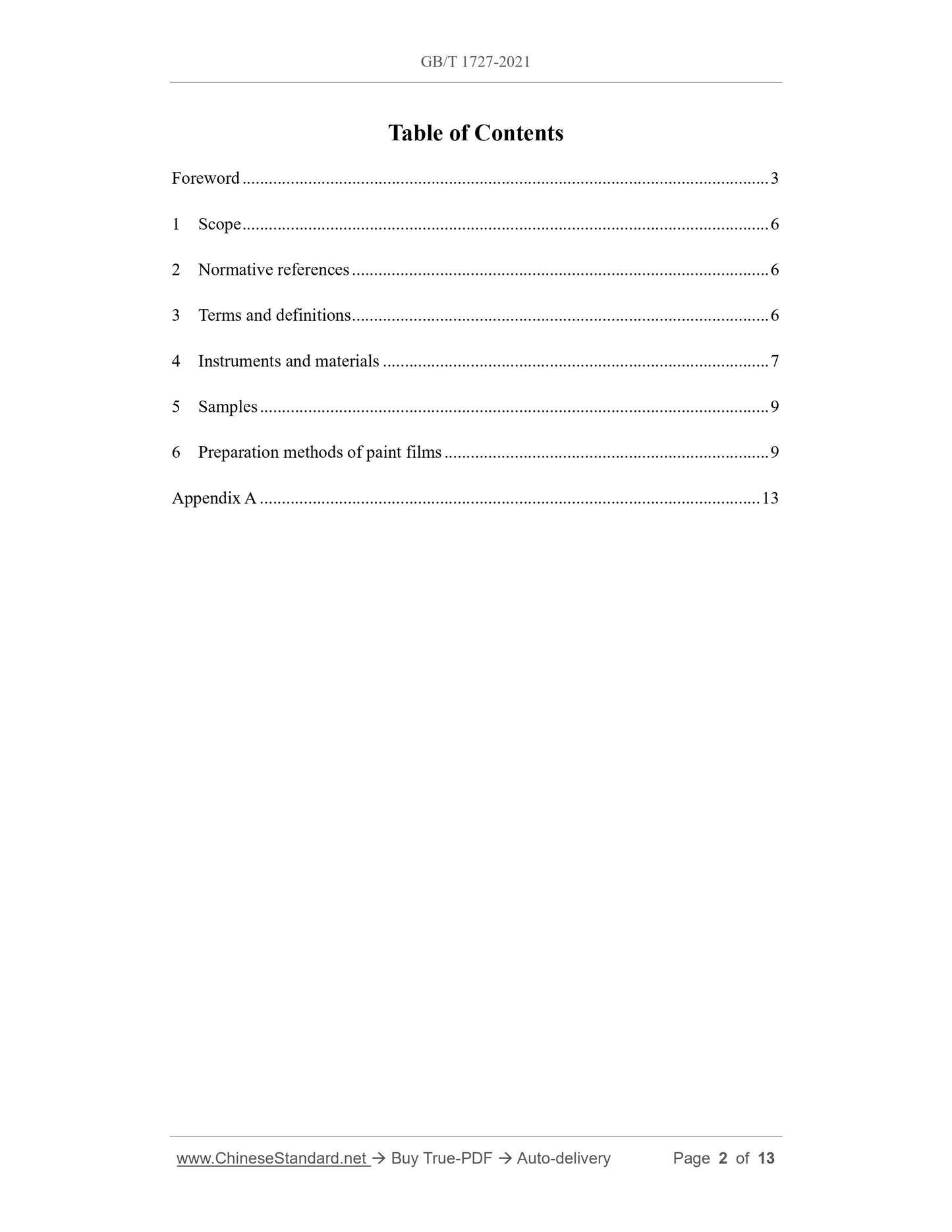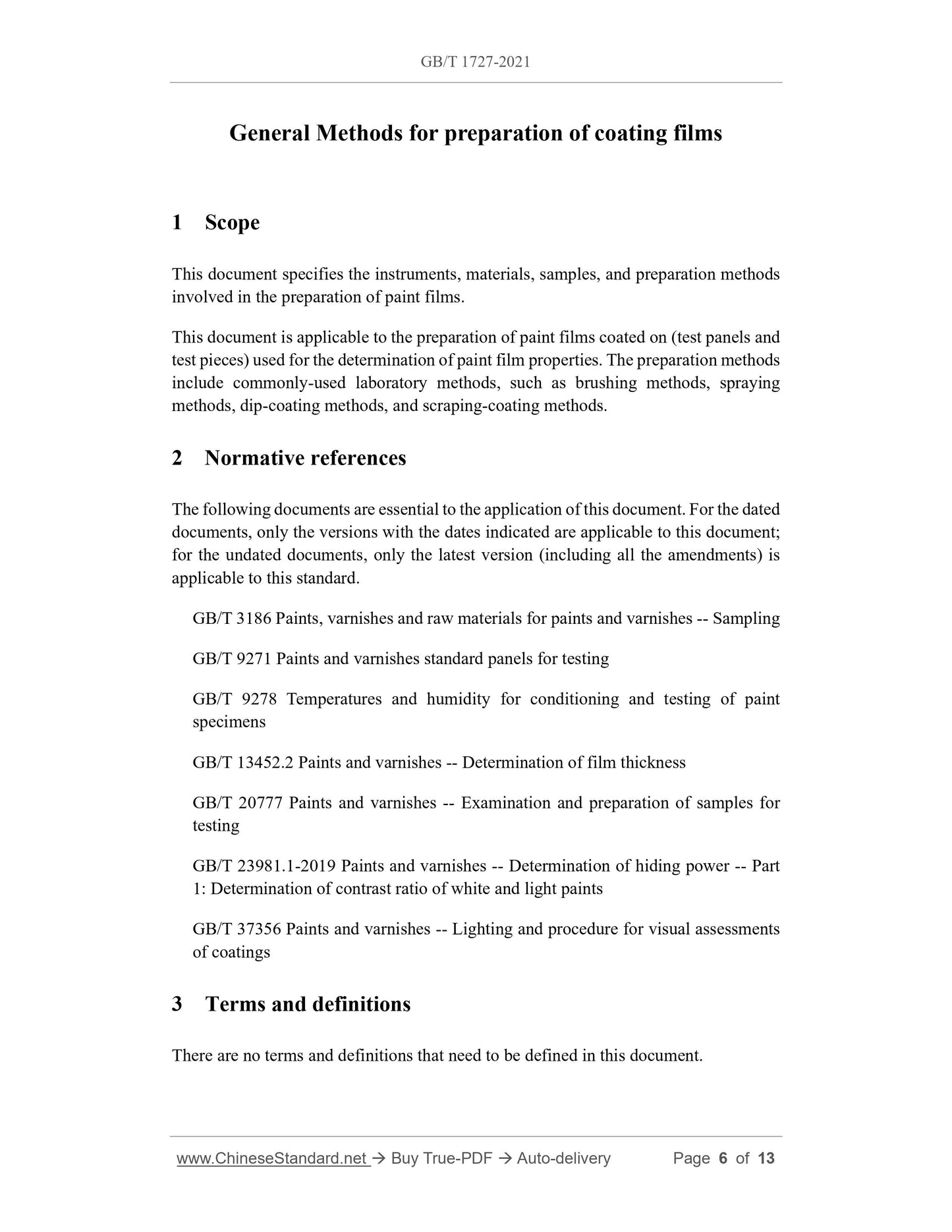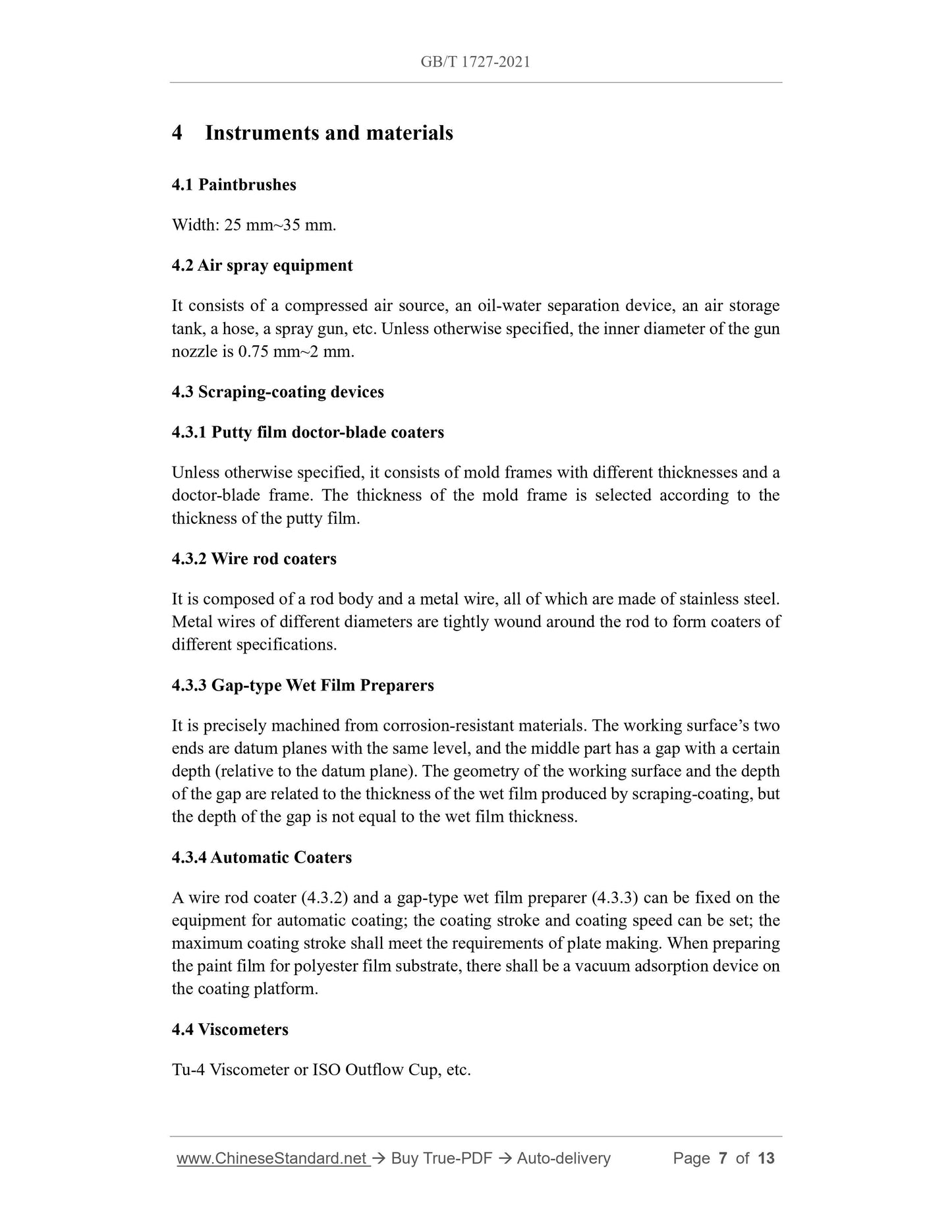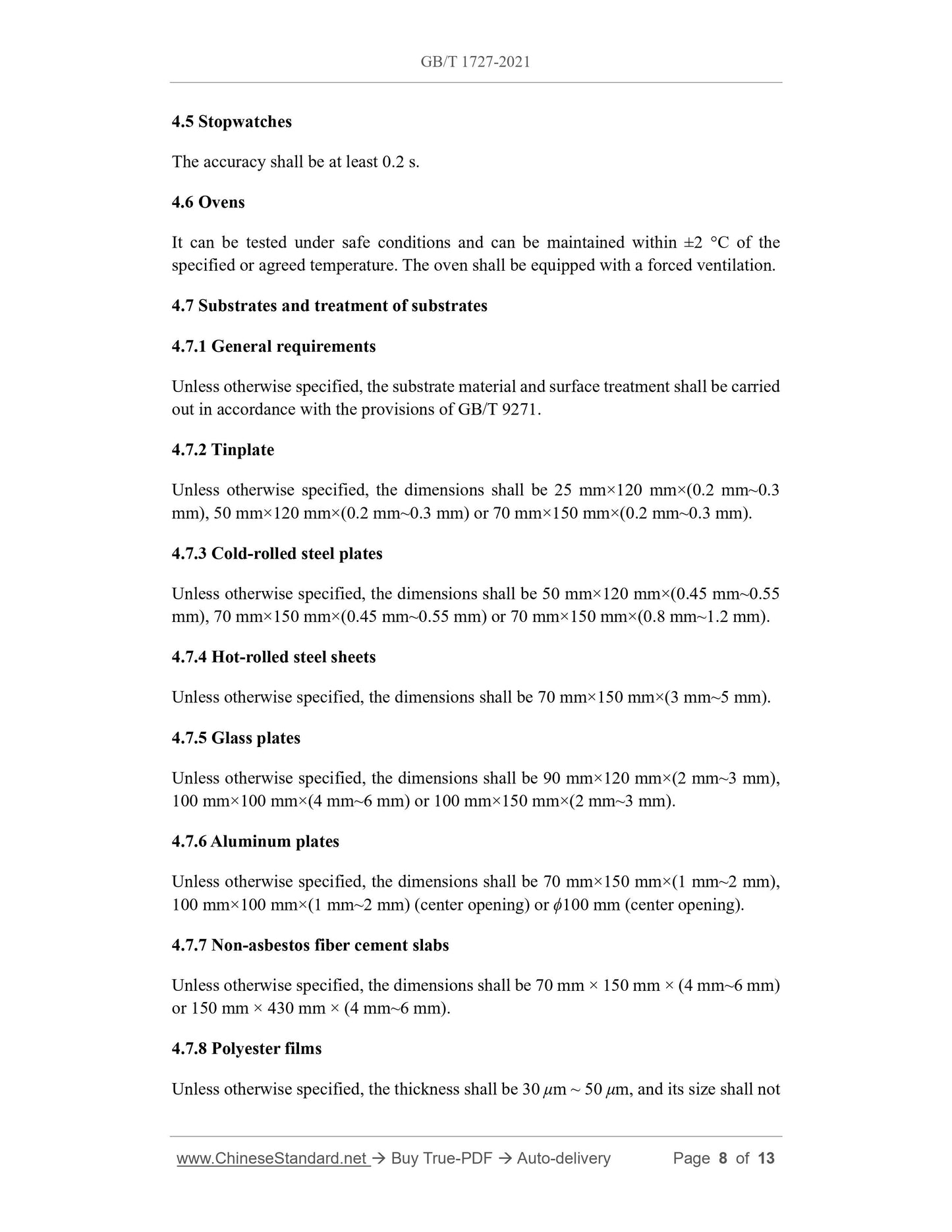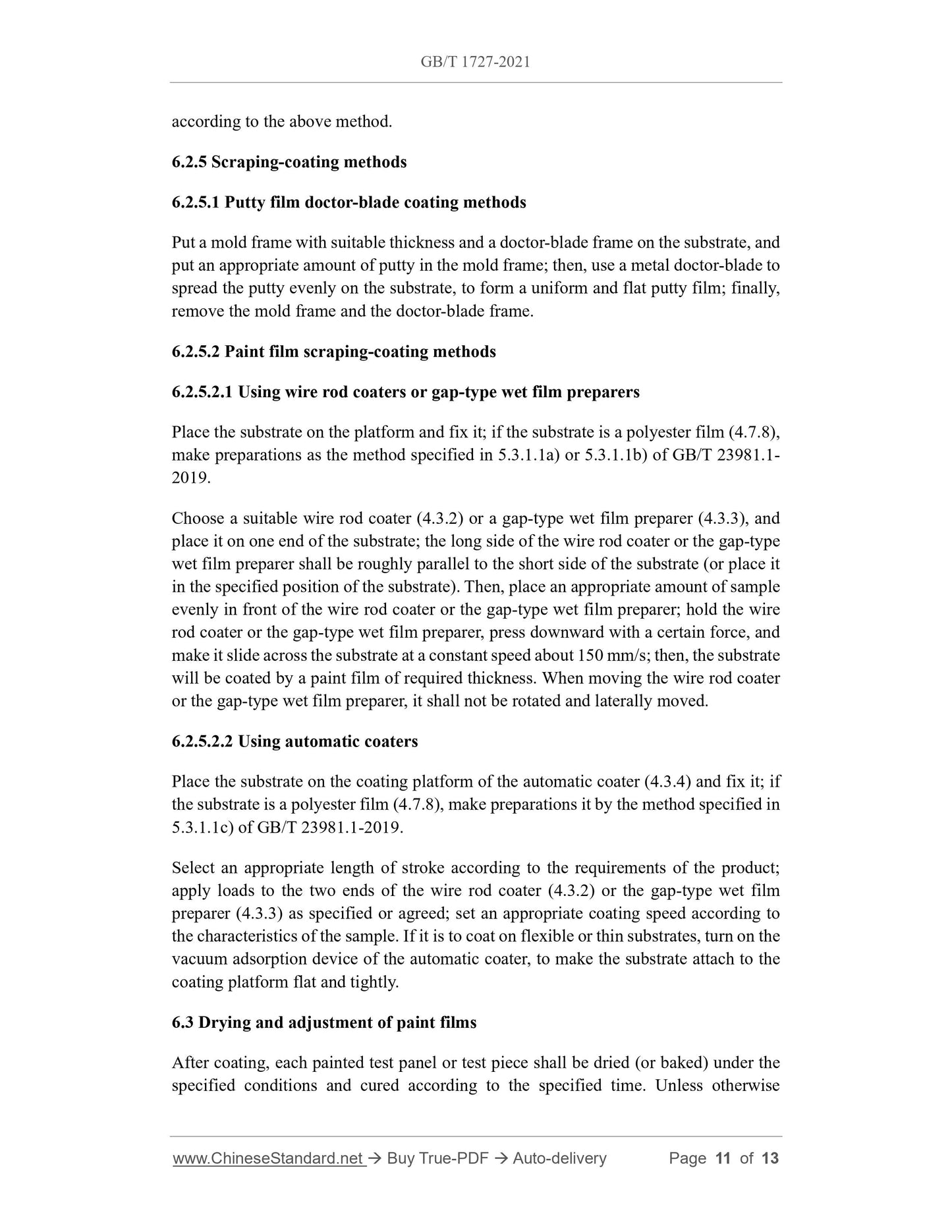1
/
of
6
www.ChineseStandard.us -- Field Test Asia Pte. Ltd.
GB/T 1727-2021 English PDF (GB/T1727-2021)
GB/T 1727-2021 English PDF (GB/T1727-2021)
Regular price
$170.00
Regular price
Sale price
$170.00
Unit price
/
per
Shipping calculated at checkout.
Couldn't load pickup availability
GB/T 1727-2021: General methods for preparation of coating films
Delivery: 9 seconds. Download (and Email) true-PDF + Invoice.Get Quotation: Click GB/T 1727-2021 (Self-service in 1-minute)
Newer / historical versions: GB/T 1727-2021
Preview True-PDF
Scope
This document specifies the instruments, materials, samples, and preparation methodsinvolved in the preparation of paint films.
This document is applicable to the preparation of paint films coated on (test panels and
test pieces) used for the determination of paint film properties. The preparation methods
include commonly-used laboratory methods, such as brushing methods, spraying
methods, dip-coating methods, and scraping-coating methods.
Basic Data
| Standard ID | GB/T 1727-2021 (GB/T1727-2021) |
| Description (Translated English) | General methods for preparation of coating films |
| Sector / Industry | National Standard (Recommended) |
| Classification of Chinese Standard | G50 |
| Word Count Estimation | 10,130 |
| Issuing agency(ies) | State Administration for Market Regulation, China National Standardization Administration |
Share
